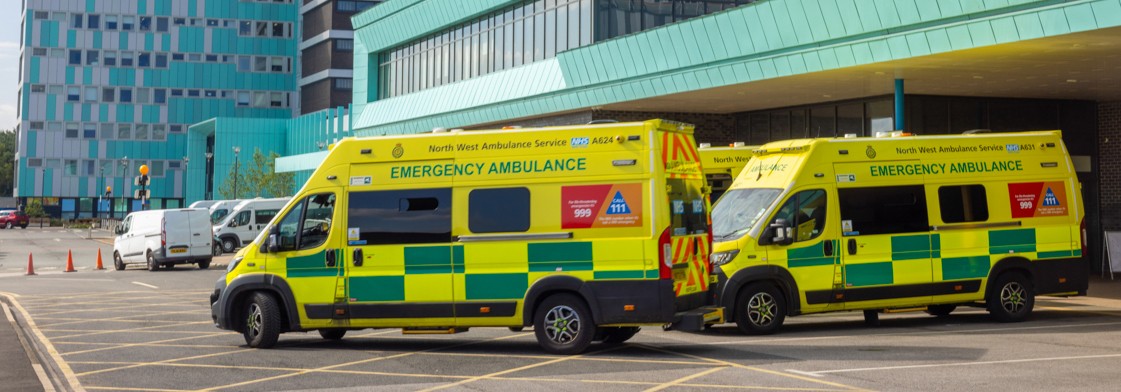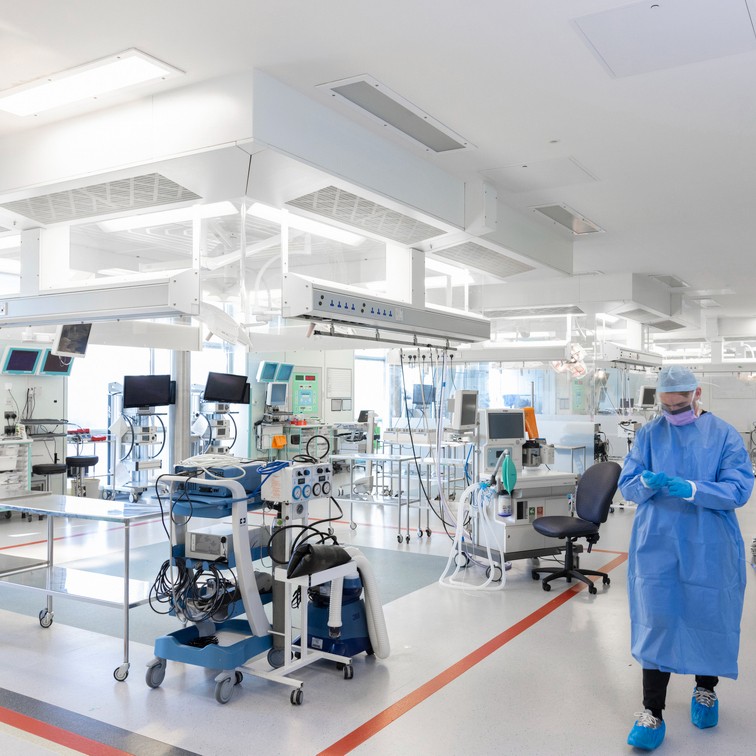Improving access to Thrombectomy for stroke patients
The Stroke Emergency Assessment Centre (SEAC) at Aintree University Hospital is a £1.5 million purpose-built, 24/7 facility which has its own dedicated resuscitation assessment bays, CT scanner and ultrasound imaging facilities. It operates as a dedicated Stroke A&E for patients requiring emergency care and is the first of its kind in the UK.
Patients that are assessed at the SEAC and need a thrombectomy - a procedure to remove a blood clot that is causing a stroke by blocking blood supply to an area of the brain - can also benefit from the centre’s proximity to The Walton Centre NHS Foundation Trust.
Thrombectomy can result in a dramatic recovery for stroke patients, however for every minute that passes the potential for improvement reduces, so time is of the essence.
The Walton Centre is one of only two centres in the North West providing thrombectomy procedures 24 hours a day, seven days a week.
By working together to look at the pathway, teams from Aintree and The Walton Centre have been able to dramatically improve outcomes for patients that require a thrombectomy, which has contributed to Aintree becoming one of the top performing stroke centres in the country according to Sentinel Stroke National Audit Programme (SSNAP) data. In every month since the SEAC’s opening, we have reported higher than the mean levels of thrombectomy referrals compared to the year before.
Dr Nikhil Sharma, Clinical Director for the North Mersey Stroke Service, said: “We worked closely with colleagues from The Walton Centre when planning and developing the service, and our patient outcomes show that we have made a positive impact on the care of stroke patients in our region. However, there are a few areas where things would be easier if we were part of one organisation with one set of governance arrangements.
“For example, if a stroke patient needs care from The Walton Centre they need to be under the care of a Consultant Neurologist, so we need to agree a care plan and transfer them, whereas in pretty much any other hospital in the country a stroke patient would remain under the care of a specialist Stroke Consultant for the duration of their care, even if they required a thrombectomy or Neurologist input.
“We are in the process of unpicking that and looking at the use of honorary contracts, but becoming one organisation would smooth that process too.”
Dr Sacha Niven, Consultant Neuroradiologist and Deputy Medical Director at The Walton Centre, said: “There have been significant patient benefits as a result of our close collaboration with Aintree on the stroke service, however there is still some duplication in the rotas required to support a 24/7 service at what are still two separate organisations, and some additional barriers to sharing expertise across the hospitals on things like interpreting scans, which would benefit from us being part of one organisation.”
The centre at Aintree also includes a Hyper-Acute Stroke Unit, which is dedicated to caring for people in the critical 72-hour period after a stoke occurs. Performance data demonstrates a reduction in median time to CT scan and to consultant review, meaning patients are seen by a stroke specialist nurse and cared for in a dedicated Stroke unit environment immediately on attending the hospital. Prior to the SEAC opening, stroke patients waited a median of 3 hrs and 15 minutes for admission to a stroke unit following attendance at the Emergency Department.
Reflecting the success of this partnership working, the stroke service took home the Excellence in Urgent and Emergency Care award at last year’s NHS Parliamentary Awards and was shortlisted in the Acute Sector Innovation of the Year at the Health Service Journal Awards 2024.

